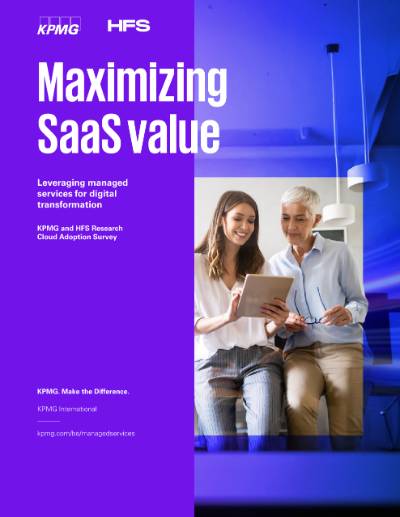When it comes to functional transformation in the cloud, implementing a software-as-a-service (SaaS) platform is the beginning of the journey—not the final destination.
Many companies use managed services to continually optimize their platforms beyond the initial launch to achieve the desired business outcomes. In this model, service providers assist with software updates, configurations, process improvements, adapting to market change, and more—all on an ongoing basis. These services are delivered remotely, with predictable costs.
Key success factors
However, according to the latest KPMG and HFS Research Cloud Adoption Survey, only about 25 percent of companies are getting the long-term value they expect from SaaS. What accounts for this?
Based on our global survey of more than 700 business leaders, managed SaaS models range from IT-centric, ticket-based activities to more business-centric services that enable ongoing transformation. We call it the Managed Services Road Map, which is detailed in the report.
Mapping the route for sustained transformation
Use the Managed Services Road Map to analyze the characteristics of successful support models and consider the opportunities for your platform. For example, are you using SaaS optimization to drive strategic priorities, or are you focused more on keeping systems current?
The survey indicates that cloud support models usually fall into one of three, sometimes overlapping lanes on the road to SaaS success:
| Transactional | Performance | Transformational | |
|---|---|---|---|
| Provider Focus | Tactical delivery | Value creation | Sustained advantage |
| Sample Outcomes | Lower IT costs | Operational efficiency | Enabling market expansion |
| Employee productivity | Business agility | Enabling revenue growth | |
| Speed to new tech | Process improvement | Operational resilience |
Top capabilities sought from managed services providers include:
Predictable costs, leading to budget consistency
Industry expertise
Onshore/nearshore delivery
Multi-disciplinary business consulting knowledge
Functional proficiency
Explore
Connect with us
- Find office locations kpmg.findOfficeLocations
- kpmg.emailUs
- Social media @ KPMG kpmg.socialMedia



